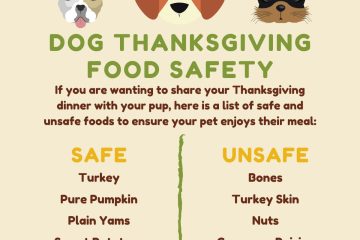Vomiting in cats and dogs can be caused by various factors, including dietary indiscretion, infections, gastrointestinal issues, or potential toxins. The color of the vomit can provide clues about the underlying cause, such as yellow bile indicating an empty stomach or red blood suggesting bleeding in the upper gastrointestinal tract.
It is important to keep an eye on your pet’s overall condition and seek veterinary assistance if the vomiting persists, is accompanied by other concerning symptoms, or if your pet appears unwell or in distress.

Credit: www.usatoday.com
Contents
Common Causes Of Vomiting
Vomiting in cats and dogs can be caused by various factors such as dietary indiscretion, infections, toxins, and gastrointestinal diseases. It is important to monitor the color and frequency of the vomit and consult a veterinarian if it persists or is accompanied by other symptoms.
Vomiting in cats and dogs can have several common causes. One of the main factors that can trigger vomiting is related to food. Some cats and dogs have sensitive stomachs and can easily develop an upset stomach when they consume certain types of food. These can include:
- Feeding your pet spoiled or expired food
- Introducing new food too quickly
- Switching to a low-quality or unfamiliar diet
- Feeding your pet table scraps or human food that is not suitable for them
- Food allergies or intolerances
It’s essential to pay attention to what your pet is eating and make sure to provide a balanced and appropriate diet for their specific needs. If you suspect that food-related causes are behind your pet’s vomiting, it’s vital to consult with your veterinarian to determine the best course of action.
Gastrointestinal Issues
In addition to food-related causes, gastrointestinal issues can also contribute to vomiting in cats and dogs. The gastrointestinal system plays a crucial role in digestion, absorption, and elimination, so any disruption can lead to vomiting. Some common gastrointestinal issues that can cause vomiting include:
- Gastroenteritis (inflammation of the stomach and intestines)
- Gastric ulcers
- Intestinal obstruction or foreign body ingestion
- Parasitic infections, such as worms
- Pancreatitis (inflammation of the pancreas)
These issues can be caused by various factors, such as infections, dietary indiscretion, or underlying medical conditions. If you suspect that your pet’s vomiting is related to gastrointestinal issues, it’s crucial to seek veterinary care immediately, as some conditions can be life-threatening if left untreated.

Credit: www.splootvets.com
Colors Of Vomit And What They Indicate
Vomiting in cats and dogs can have various causes, and the color of the vomit can indicate different underlying issues. Understanding these colors can help determine whether immediate veterinary care is needed or if it is a less urgent concern.
When it comes to our beloved pets, vomit can be a common occurrence. While it’s never pleasant to clean up, understanding the colors of vomit and what they indicate can help us better address any potential health concerns. Whether you have a cat or a dog, the color of their vomit can provide valuable insights into their well-being.Yellow Vomit
Yellow vomit in cats and dogs can be a cause for concern. It often indicates that there is bile present in the stomach. Bile is a digestive fluid that helps break down food, so when it appears in vomit, it may suggest an issue with the digestive system. It can be a sign of gastritis, which is inflammation of the stomach lining, or it can indicate a blockage in the bile ducts. If you notice your pet vomiting yellow, it is essential to monitor them closely and consult with a veterinarian if the vomiting persists or is accompanied by other symptoms such as lethargy or loss of appetite.Bloody Vomit
Bloody vomit is a more serious concern and requires immediate attention. It can be a sign of internal bleeding or an injury in the gastrointestinal tract. The presence of blood in vomit can also indicate the ingestion of a foreign object that has caused damage. If you notice red or dark brown specks or streaks in your pet’s vomit, it is recommended to seek veterinary care immediately. Prompt medical attention can help identify the underlying cause and provide appropriate treatment to ensure your pet’s well-being. In addition to color, other factors such as odor, consistency, and frequency of vomiting should also be considered when assessing your pet’s health. It’s important to note that while occasional vomiting can be normal, persistent or severe vomiting warrants professional evaluation. Remember, as pet owners, it is our responsibility to monitor our furry friends for any changes in behavior, including abnormal vomiting. Regular veterinary check-ups and open communication with your veterinarian can help identify and address any potential health issues promptly. By understanding the colors of vomit and what they indicate, we can provide our pets with the care they need to lead happy and healthy lives.When To Seek Veterinary Care
Vomiting in cats and dogs can have multiple causes and may vary in color. If your pet is experiencing persistent vomiting, seeking veterinary care is crucial to diagnose and treat the underlying issue.
Persistent Vomiting
Persistent vomiting in cats and dogs can indicate a more serious underlying issue. If your pet is consistently vomiting or experiencing frequent episodes of vomiting, it is crucial to seek veterinary care. While occasional vomiting may be normal, persistent vomiting is a cause for concern and should be addressed promptly to ensure the health and well-being of your furry friend.Dehydration
One of the major risks associated with vomiting in cats and dogs is dehydration. Vomiting can lead to a loss of fluids and electrolytes, which can quickly deplete your pet’s hydration levels. Dehydration can become a serious health issue, especially if it is not addressed promptly. Signs of dehydration include dry gums, lethargy, sunken eyes, and decreased skin elasticity.What To Do
If you notice your cat or dog vomiting persistently or suspect they are becoming dehydrated, it is essential to take the appropriate measures. Here are some steps you can take to help your pet and when to seek veterinary care:- Limit food and water: Temporarily withhold food and offer small amounts of water to allow your pet’s stomach to settle.
- Monitor vomiting frequency: Keep track of how often your pet vomits and any changes in the vomit’s appearance or consistency. This information will be valuable for your veterinarian.
- Check for other symptoms: Look for additional signs of illness, such as diarrhea, lethargy, loss of appetite, or abdominal pain. These symptoms can give insights into the underlying cause of the vomiting.
- Contact your veterinarian: If your pet’s vomiting persists, becomes more frequent, or if they exhibit signs of dehydration, it is crucial to reach out to your veterinarian for guidance. They can provide a thorough examination, perform necessary tests, and recommend appropriate treatment options.
- Follow your veterinarian’s advice: Once you have sought veterinary care, be sure to follow your veterinarian’s instructions regarding treatment, medications, and any necessary dietary changes. Their expertise will be instrumental in ensuring your pet’s recovery.

Credit: www.usatoday.com
What To Do For A Vomiting Pet
Vomiting in cats and dogs can have various causes and colors. If your pet is vomiting, it is important to closely monitor them and seek veterinary advice immediately to determine the appropriate steps and treatment.
Seeing your beloved furry friend vomiting can be distressing, but it’s important to stay calm and take immediate action to help them feel better. Here are some steps you can take if your cat or dog is vomiting:1. Withhold Food And Water
If your pet has just vomited or is actively vomiting, it’s essential to give their stomach a break by temporarily withholding food and water. This will allow their digestive system to settle, reducing the chances of further irritation or reoccurrence of vomiting. However, if your pet continues to vomit or shows signs of dehydration, it’s crucial to seek veterinary assistance.2. Contact A Veterinarian
In cases where vomiting persists or is accompanied by other concerning symptoms, it’s crucial to contact a veterinarian as soon as possible. They will be able to evaluate the severity of the situation and provide appropriate guidance and treatment tailored to your pet’s needs. Remember, prompt veterinary care can help identify and address any underlying health issues causing the vomiting.When contacting a vet, be prepared to share key information, such as the color and consistency of the vomit, any unusual behavior your pet has exhibited, recent dietary changes, or potential exposure to toxins. This information can assist the veterinarian in making a more accurate diagnosis and developing an effective treatment plan.
Remember, while it’s natural to be worried about your pet, staying calm and taking the necessary steps will help ensure they receive the care they need. By withholding food and water temporarily and reaching out to a veterinarian, you can help address the underlying causes of vomiting and support your furry friend on the road to recovery.
Frequently Asked Questions For Vomiting In Cats Dogs Common Causes Colors What To Do
What Can I Give My Cat To Stop Vomiting?
You can try feeding your cat a bland diet of boiled chicken or rice to help stop vomiting.
What Does Abnormal Cat Vomit Look Like?
Abnormal cat vomit can vary, but it may have any of these characteristics: unusual color, such as green or red; strong odor; consistency that is thicker or more watery than normal; containing undigested food; or presence of blood or foreign objects.
Seek veterinary attention if you observe any abnormal vomiting.
What Color Vomit Is Bad For Dogs?
Bad vomit color for dogs can vary, but some concerning colors include yellow, green, or bloody vomit. If your dog’s vomit has any of these colors, it’s a sign of potential health issues. It is important to consult a veterinarian for proper diagnosis and treatment.
Conclusion
To wrap it up, understanding the causes and colors of vomit in cats and dogs is crucial for pet owners. Whether it’s due to dietary indiscretion, infection, or underlying health issues, recognizing the signs early can help direct appropriate treatment.
Remember, if your pet vomits frequently, has blood in their vomit, or exhibits other concerning symptoms, it’s best to consult a veterinarian for a thorough evaluation and guidance. By taking proactive measures and ensuring their well-being, we can provide our furry friends with the care they truly deserve.



